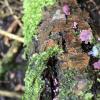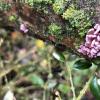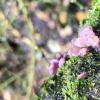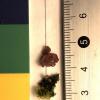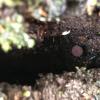
24-12-2025 17:08
Hulda Caroline HolteHello, I have found this propoloid ascomycete on

21-12-2025 09:32
Hello.A tiny ascomycete found embedded in wood in

21-12-2025 21:32
Pol DebaenstHello, Garden, Burgweg 19, Veurne, BelgiumOn 10/1

22-12-2025 23:38
Patrice TANCHAUDBonsoir, récolte sur un mur en pierre, apothéci

22-12-2025 00:47
Patrice TANCHAUDBonsoir, récolte à proximité du milieu dunaire
I have read that microscopy is better to distinguish the apothecia from A. cylinchnium. Is this the only similar species to consider, and is the brain-like anamorph only formed by A. sarcoides?
I include some photos from southern England, last year (20/11/2023), showing both morphs together on the fallen trunk of an unindentified angiosperm, possibly Betula, in mixed deciduous woodland.
Thanks in advance.

Thank you for answering, it seems the third traditional species you referred to must be A. albida (solitaria).
I do have another collection from the same day, a few minutes walk up a nearby stream. This was a solitary, small, purplish apothecium, on very damp and decayed wood that I suspect is Fraxinus excelsior.
I thought this may be an A. sp. too, although the habitat and habit seems a little different. I still have the dried apothecium but I haven't worked with dry material before and I guess it will be harder.

